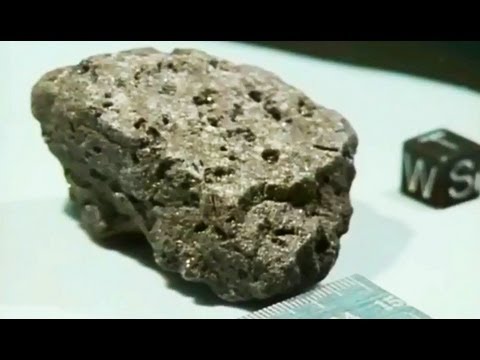Moon Rocks at the Lunar Sample Laboratory Facility: “Lunar Curatorial Facility Resource” 1989 NASA
more at
“This video shows daily activities in the Lunar Curatorial Facility. The video covers the various studies being conducted on lunar dust, rock, and core samples brought back by Apollo crews. Released July 1989.” Silent.
Public domain film from NASA, slightly cropped to remove uneven edges, with the aspect ratio corrected, and mild video noise reduction applied.
The Lunar Sample Laboratory Facility (LSLF) is a repository and laboratory facility at NASA’s Lyndon B. Johnson Space Center in Houston, Texas, opened in 1979 to house geologic samples returned from the Moon by the Apollo program missions to the lunar surface between 1969 and 1972. The facility preserves most of the 382 kilograms (840 lb) of lunar material returned over the course of Apollo program and other extraterrestrial samples, along with associated data records. It also contains laboratories for processing and studying the samples without contamination…
Features
The two-story, 1,300-square-metre (14,000 sq ft) facility consists of storage vaults for the samples, laboratories for sample preparation and study, a vault for sample data and records, and machinery to supply nitrogen to the cabinets in which the samples are stored and processed.
The facility’s storage vaults are elevated above anticipated storm-surge sea level heights to protect the samples from threats posed by hurricanes and tornadoes.[6] During hurricane threats, a water-tight door is bolted into the frame of the door to the pristine sample vault in order to protect the samples.
The facility takes extensive measures to prevent contamination of the lunar samples. For example:
All materials used in constructing and equipping the building (including floor coverings, walls, plumbing, light fixtures, and paint) were carefully screened to exclude chemical elements that would pose unacceptable contamination threats to the lunar samples.
Air in the facility filtered to remove all suspended particles, and the air in the laboratories and vaults in maintained at slightly higher than atmospheric pressure to keep unfiltered air from entering. The particulate concentration of the air in the various areas is monitored regularly.
People entering laboratories and vaults are required to don cleanroom suits.
Most samples are not handled directly. Researchers prepare samples in stainless steel cabinets through multi-layered gloves. The atmosphere in these cabinets is purged by high-purity nitrogen that is continuously monitored for oxygen and moisture contents. (When research requires that a sample be exposed to contamination, the sample is kept separate from pristine samples after its return.)
To avoid cross-contamination of samples from different places on the Moon, samples from different missions are not processed together in the same cabinet, but one or more cabinets are designated for processing samples from a particular mission. When cabinets become dusty from extensive processing or are needed for processing samples from a different mission, they are cleaned using ultra-pure water.
The facility has room to store many more lunar samples. NASA anticipates that more samples from the moon will be brought back and processed and curated in the lab.
Samples stored at facility and other lunar samples
The facility is the chief repository of the samples returned by the Apollo program. The Apollo missions to the lunar surface (Apollo 11, Apollo 12, Apollo 14, Apollo 15, Apollo 16, and Apollo 17) returned a total of 382 kilograms (842 pounds) of lunar rocks, core samples, pebbles, sand and lunar surface dust, comprising 2200 individual specimens. Seventy-five percent of the lunar materials returned by Apollo are housed at the Lunar Sample Laboratory Facility, most in pristine condition. Some of the materials have been processed into smaller samples to meet scientific requirements, resulting in more than 110,000 individually cataloged samples.
Perhaps the most notable of the samples stored at the facility is the Genesis Rock, a sample ultimately determined to be nearly as old as the moon itself. Also at the facility is the sample known as Big Muley, the largest sample returned from the moon by Apollo.
In addition to the Apollo materials, the Johnson Space Center also houses other extraterrestrial samples:..

